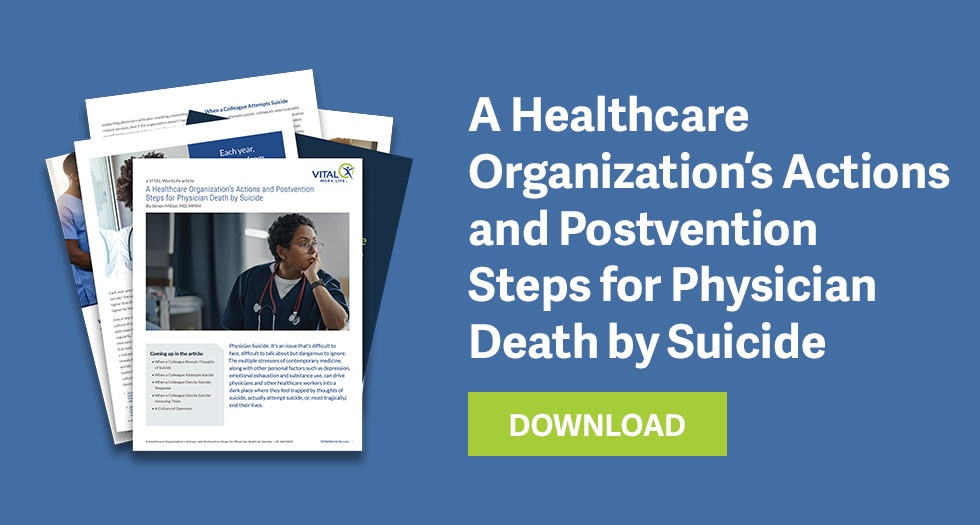The American Foundation for Suicide Prevention has stark commentary regarding the medical profession and suicide.
“Physicians have higher rates of burnout, depressive symptoms, and suicide risk than the general population,” the organization notes. “Physicians and trainees can experience high degrees of mental health distress and are less likely than other members of the public to seek mental health treatment.”

Sobering Numbers
Statistics bear out these sobering observations:
- Each year, 300 to 400 physicians die by suicide; the suicide rate for male physicians is up to 40 percent higher than that of the general population. For female physicians, it’s up to 130 percent higher.
- In one study, 28 percent of residents reported a major depressive episode during training, while only 7 or 8 percent of people in the same age range in the general population report such episodes.
- Although depression is a significant risk factor at about the same rate for physicians and nonphysicians who died by suicide, physicians were less likely to be receiving mental health treatment at the time of the suicide.
- A study of the suicide rates of female nurses from 2005 to 2016 showed their rate was significantly higher (10 per 100,000) than the general female population (7 per 100,000). The suicide rate for male nurses (33 per 100,000) was also higher than the general male population (27 per 100,000).
These painful numbers point to the fact that your healthcare organization is likely to experience suicidality—suicidal thoughts, suicide attempts and/or deaths by suicide may be realities in your workplace. How will you respond, in the short term and in the long term? How will you work toward addressing, heading off and recovering from suicide?
Read my article A Healthcare Organization's Actions and Postvention Steps for Physician's Death by Suicide to learn more.



